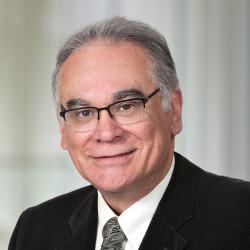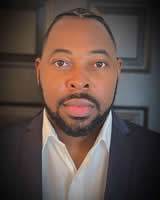Higher education’s commitment to diversity, equity and inclusion is nearing a potential inflection point as two trends coalesce this summer: State bills stamping out DEI offices and two Supreme Court rulings are expected to strike down affirmative action in the coming days.
These decisions, some higher education stakeholders argue, will have both short- and long-term impacts on minority students and American communities at large. At the campus level, colleges risk isolating students.
“Without fully understanding a student’s background and life experiences, the ability to help them thrive in higher education is obstructed. Underlying it is not just about students getting in; it is also about making them feel part of the school community and ensuring they continue and thrive,” said Dr. Kelly Dore, an assistant professor at McMaster University and co-founder of Acuity Insights, a data-driven software company that identifies strong college applicants.
But as these trends develop long-term, restricting a diverse, educated workforce can have deadly consequences. Take, for example, medical professionals in practice and research who are siloed from the experience of minority communities.
“When you don’t have people who really understand what those communities are going through, it’s hard to address any issues,” says Dr. David Acosta, chief diversity and inclusion officer of the Association of American Medical Colleges (AAMC). “Where enrollment is challenged, it’s going to impact their health and only exacerbate those health inequities.”
Leaders believe that regardless of these overhead rulings, there are integral ways higher education can maintain its mission of cultivating a culture of diverse perspectives.
“What’s incredibly important is that even without formal offices and programs, colleges must signal their commitment to ensuring diversity, equity and inclusion remains a critical part of their perspective,” says Dore.
“Don’t be led by fear,” advises Acosta.
More from UB: More than 40% of today’s online students are previous college stop-outs: report
Upending affirmative action: Dr. David Acosta
As the head of DEI efforts in two states where affirmative action is already banned, Acosta has vetted experience in maneuvering institutions around restrictions against race-based admissions.
Previous to working at AAMC, Acosta served as the senior associate dean for equity, diversion and inclusion at the University of California, Davis, and the first chief diversity officer at the University of Washington School of Medicine, where he established its Center for Equity, Diversity, and Inclusion.
Here is what he learned leading those states post-affirmative action.

Learn to interpret the law with a level head
“It’s really critical that people in the admissions space really understand what the law says, and more importantly, what it doesn’t say,” Acosta says. “You have to be careful not to over-interpret it.”
Acosta remembers how admissions deans, at the time when affirmative action was disbanded, had begun over-implying what the law stated. “I remember one university admissions dean who thought you couldn’t tweak this or that in a certain way, but the law never said that.”
Discover students’ cultural diversity in their application
Admissions officers can find clues about a student’s cultural identity by examining the extracurricular activities they’re involved in, the clubs and organizations they belong to, the research they’ve been doing and the patient population they talk about in their personal statement, Acosta says.
Ultimately, Acosta believes that a student’s active commitment to the cultural identity they represent is leagues beyond just checking off a box on an application that asks a student to identify their race or ethnicity. This way, students can’t rely on tokenism to get the one-up on an application, according to Acosta. “You can really demonstrate someone’s true commitment and dedication to a particular community by what they do.”
Ensuring equity in higher education is an active intention, according to Acosta—not something someone is born with.
Dismantling DEI: Darryl Rice
Darryl Rice is the immediate past president of the Management Faculty of Color Association and assistant professor at Miami University (Ohio). He sees the current legislative pushback against DEI as a natural progression in a cycle when certain groups fight for their rights to be heard and respected.
“Movements to be more inclusive rarely do not encounter backlash after an initial wave of support,” says Rice.

He compares today’s intention for inclusivity in higher education to the woman’s suffrage movement. Deemed “feminists,” groups that opposed women’s right to vote weaponized the term to rouse fear and condemnation in others. Now, opponents to DEI liken the terms “social justice warrior” and “woke” to indoctrination. However, being “woke,” Rice says, originally came to popularity after several high-profile killings of black men, such as George Floyd and Ahmaud Arbery, at the turn of the decade.
“The origination of wokeness in the African American community was that you were aware of the social injustices you may face. Wokeness was in parenting,” Rice says. “You always had to have the talk with black kids at a very young age, but now it’s being demonized as ‘woke’ that parents teach their children that police brutality is a significant issue.”
Whether state legislatures decide to defend DEI or dismantle it, Rice believes that prioritizing the recruitment and success of first-generation students can help ensure higher education’s vitality in seeking student equity.
Personalize your recruiting approach
“At Miami University, we’re Redhawks. If I’m talking to a fifth-generation Redhawk, it’s easier to sell that person on Miami than a first-generation college student who has no idea why they should go to this university,” Rice says. “You have to tailor your message to how this university experience can deliver to this particular student.”
To do this, Rice says you need to focus on outcomes for that particular student’s demographic. “You have to be very clear in terms of the value your particular degree offers potential students. ‘What career are you trying to pursue? Here’s how our degree can help you.'”
This approach will only increase the importance of colleges and universities collecting and analyzing data on placement rates among different student demographics.
Utilize alumni networking
Rice has experienced firsthand the importance of a college network for students, and the same support must be extended to first-generation students. The data back this up, too. According to a survey of over 1,600 college students engaged in alumni networking fielded by PeopleGrove, first-generation students were more than twice as likely to agree that their alumni community helped them develop their career path.







